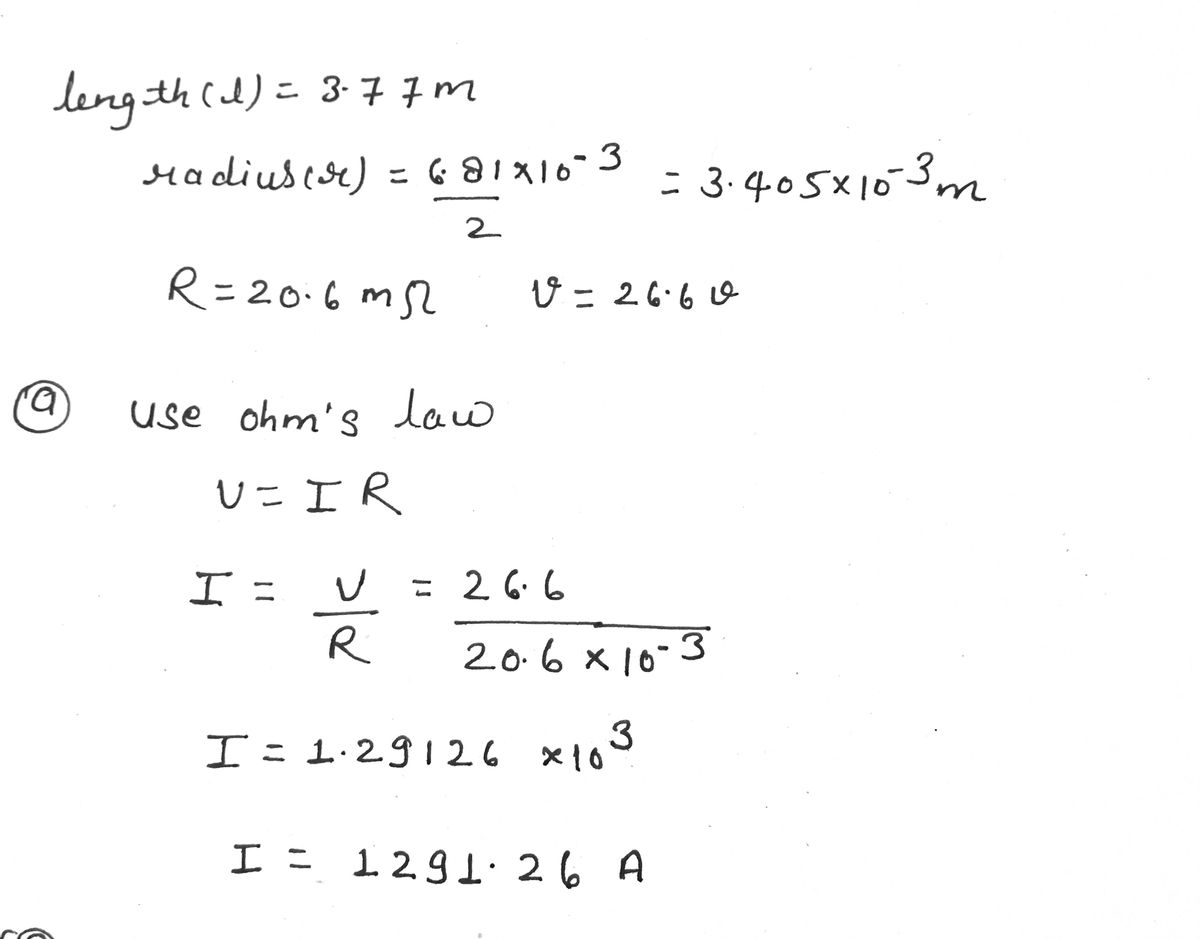A wire 3.77 m long and 6.81 mm in diameter has a resistance of 20.6 m2. A potential difference of 26.6 V is applied between the ends. (a) What is the current in amperes in the wire? (b) What is the magnitude of the current density? (c) Calculate the resistivity of the material of which the wire is made
A wire 3.77 m long and 6.81 mm in diameter has a resistance of 20.6 m2. A potential difference of 26.6 V is applied between the ends. (a) What is the current in amperes in the wire? (b) What is the magnitude of the current density? (c) Calculate the resistivity of the material of which the wire is made
Related questions
Question

Transcribed Image Text:A wire 3.77 m long and 6.81 mm in diameter has a resistance of 20.6 m2. A potential difference of 26.6 V is applied between the ends.
(a) What is the current in amperes in the wire? (b) What is the magnitude of the current density? (c) Calculate the resistivity of the
material of which the wire is made.
(a) Number 1
(b) Number i
(c) Number i
Units
Units
Units
>
>
Expert Solution
Step 1

Step by step
Solved in 2 steps with 2 images
